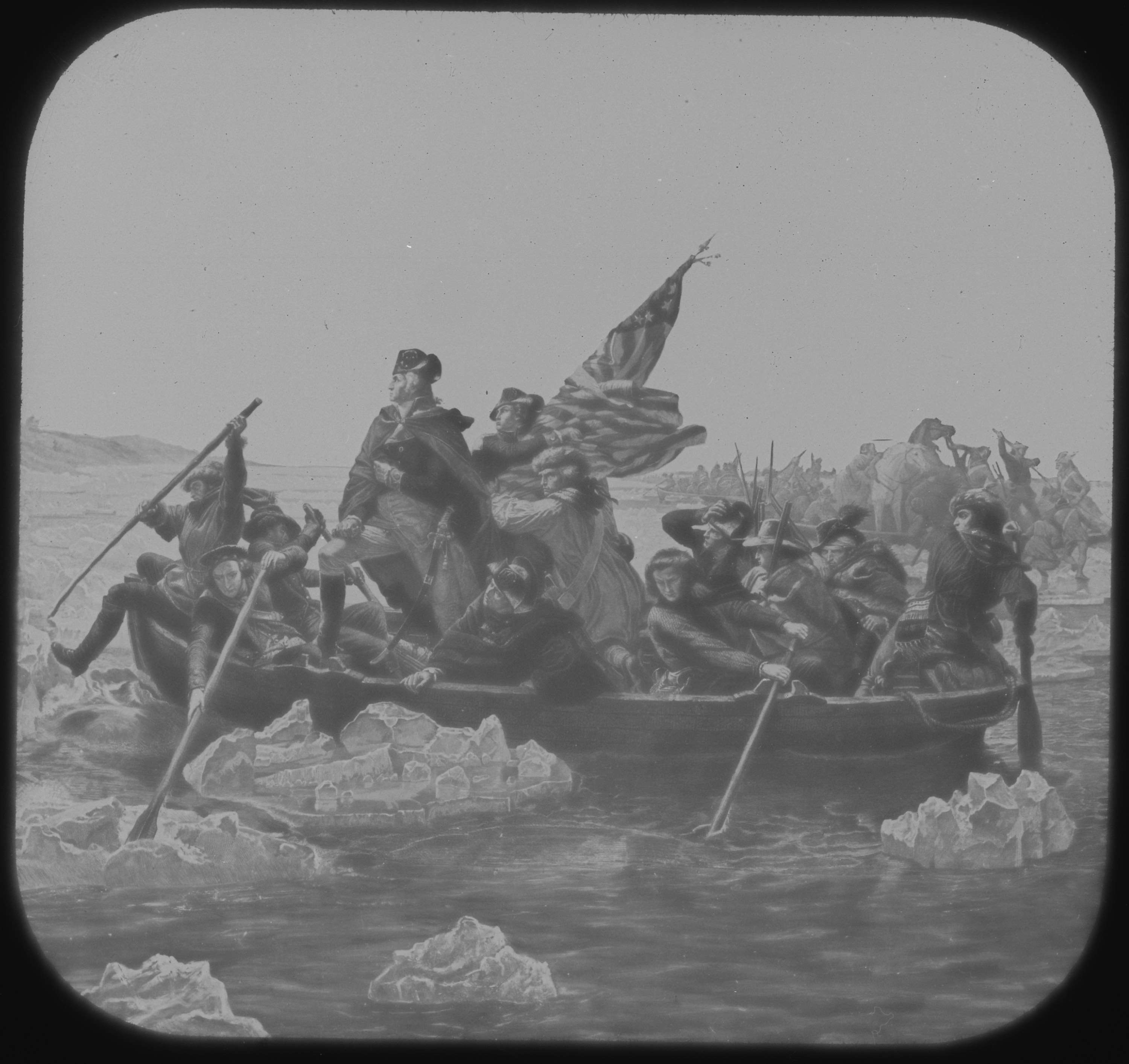Ten Crucial Days: From Washington Crossing the Delaware to the Battles of Trenton and Princeton
Mapping History
All documents and text associated with this activity are printed below, followed by a worksheet for student responses.Introduction
Examine and analyze the map and related images connected to George Washington's crossing the Delaware River and the Battles of Trenton and Princeton. (Click on the orange "open in new window" icon to see each one more closely.)Locate the blue dot on the map associated with each image. Drag each image to the correct blue dot. Read the description about each image and related event. Place each description next to the matching image on the map.
Name:
Class:
Class:
Worksheet
Ten Crucial Days: From Washington Crossing the Delaware to the Battles of Trenton and Princeton
Mapping History
Examine the documents and text included in this activity. Consider how each document or piece of text relates to the image shown below. Write the corresponding document or text number on the image where you think it belongs. (Some may be placed for you already.) Write your conclusion response in the space provided.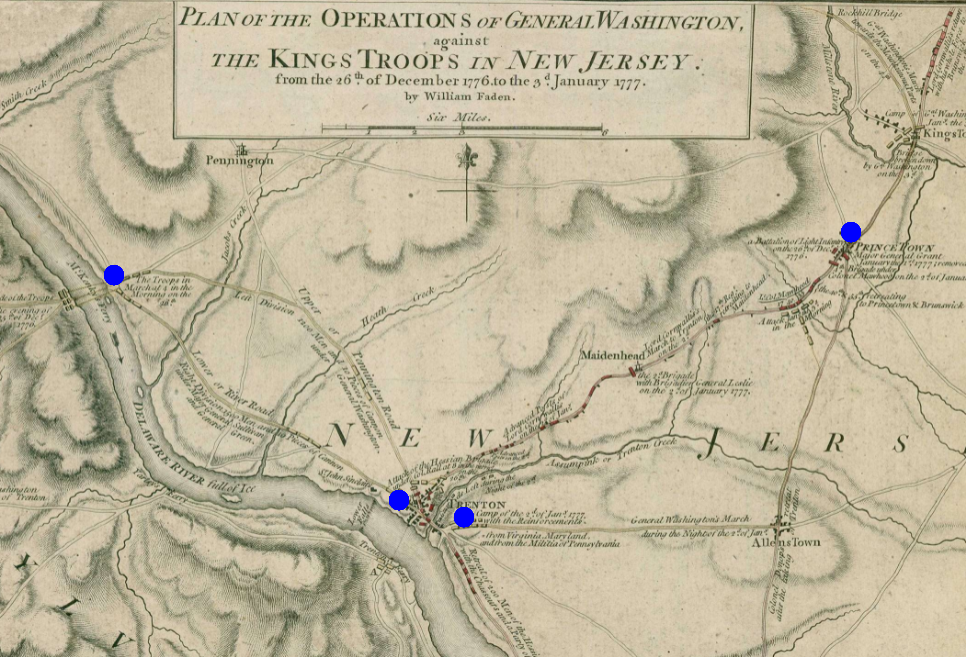
1
Activity Element

2
Activity Element

3
Activity Element
Washington Crossing the Delaware. December 1776. Copy from painting by Emanuel Leutze, 1851
Page 1
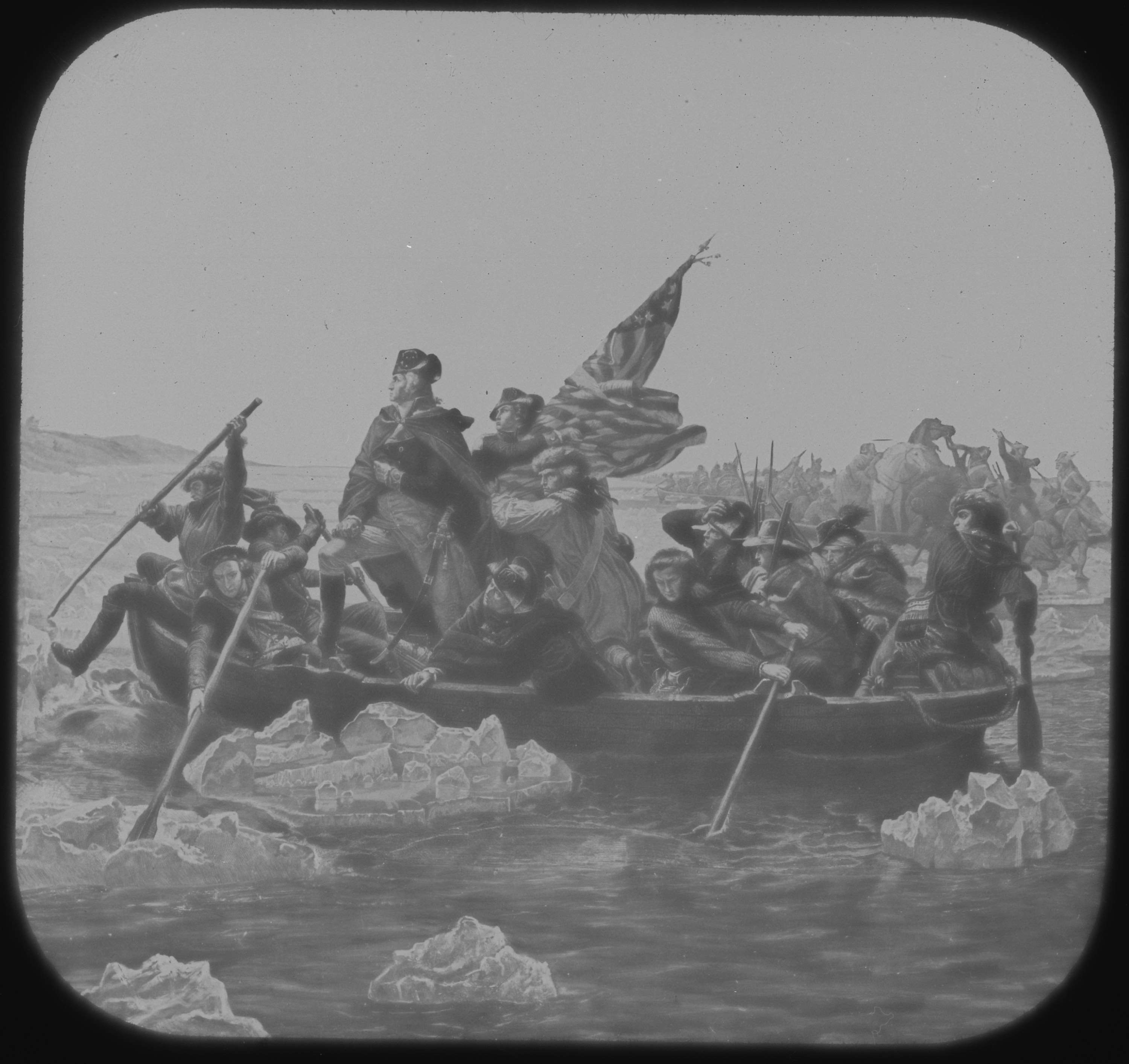
4
Activity Element
Washington at the Battle of Trenton. December 1776. Copy of engraving by Illman Brothers after E. L. Henry, circa 1870.
Page 1

5
Activity Element
Surrender of the Hessian Troops to General Washington, after The Battle of Trenton. December 1776. Copy of lithograph, 1850
Page 2
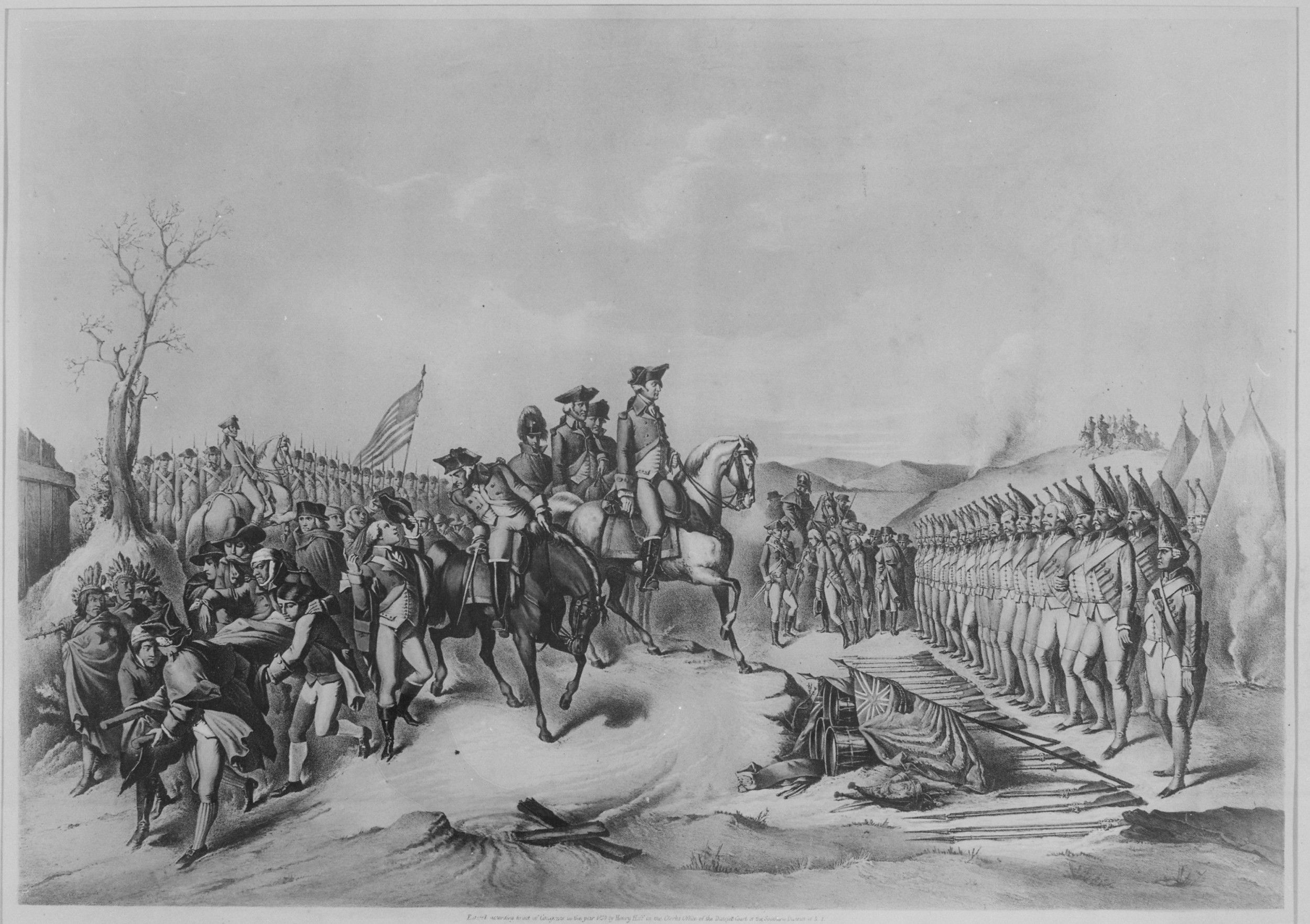
6
Activity Element
Washington at Princeton. Copy of lithograph by D. McLellan
Page 1
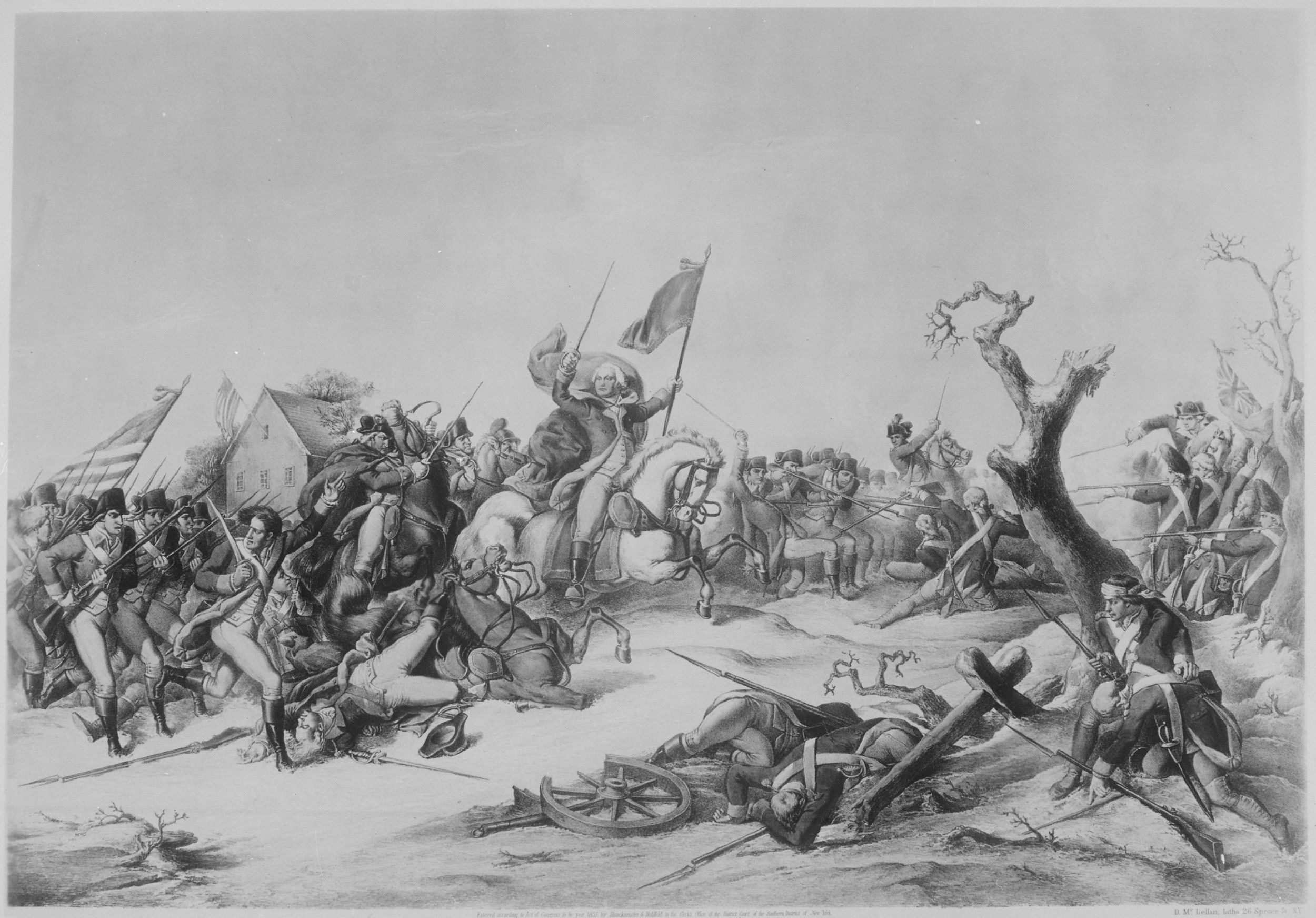
7
Activity Element
Why were General George Washington and his Continental Army trying to cross the Ice-choked Delaware River on December 25, 1776? Washington's goal was to conduct a surprise attack on a Hessian (German mercenaries for the British army) garrison in Trenton, New Jersey. General Washington and his 2,400 soldiers crossed at McConkey's Ferry in shallow draft Durham boats - cargo vessels between 40 and 60 feet in length. Snow and sleet lashed Washington's army as a nor'easter made the crossing conditions miserable. "Washington Crossing the Delaware" painted by German artist Emanuel Leutze was painted in 1851 and shows a bold General Washington navigating the frozen river with his fellow soldiers braving the elements on their way to victory. The painting was displayed in Europe and the United States and was huge success wherever it was shown.
8
Activity Element
General Washington and the Continental Army won an overwhelming victory against the Hessian (German mercenaries fighting for the British) garrison at Trenton. The Continental Army captured more than 900 prisoners as well as much needed guns and ammunition. More than 20 Hessians including their commanding general, General Rall, were killed in action. No Americans were killed and only five were wounded. In the image "Surrender of the Hessian Troops to General Washington After the Battle of Trenton" General Washington is seen accepting the surrender of the Hessian garrison. The Hessians have laid down their weapons and flags as they surrender.
9
Activity Element
General George Washington and the Continental Army scored another important and morale boosting victory at Princeton against General Mawhood and the British army on January 3, 1777. The British were pushed out of New Jersey and General Washington and his troops moved to Morristown, New Jersey, where they established winter quarters. This drawing is a copy of an 1853 lithograph by D. McLellan showing General Washington at Princeton, New Jersey. Washington is depicted leading the charge with his sword drawn against overwhelmed British forces.
10
Activity Element
After crossing the Delaware River at McConkey's Ferry into New Jersey, General Washington and the Continental Army marched 10 miles in a blizzard to Trenton. They arrived at 8:00 a.m. on the morning of December 26, 1776. The attack took the Hessian (German mercenaries for the British army) garrison under General Rall by surprise. American General Knox attacked the avenues surrounding the barracks with artillery while General Washington's infantry engaged the 1,500 Hessian soldiers at close quarters. This image, based on a painting by E.L. Henry, depicts General George Washington brandishing his sword and leading his men in the attack on the Hessian garrison.
Conclusion
Ten Crucial Days: From Washington Crossing the Delaware to the Battles of Trenton and Princeton
Mapping History
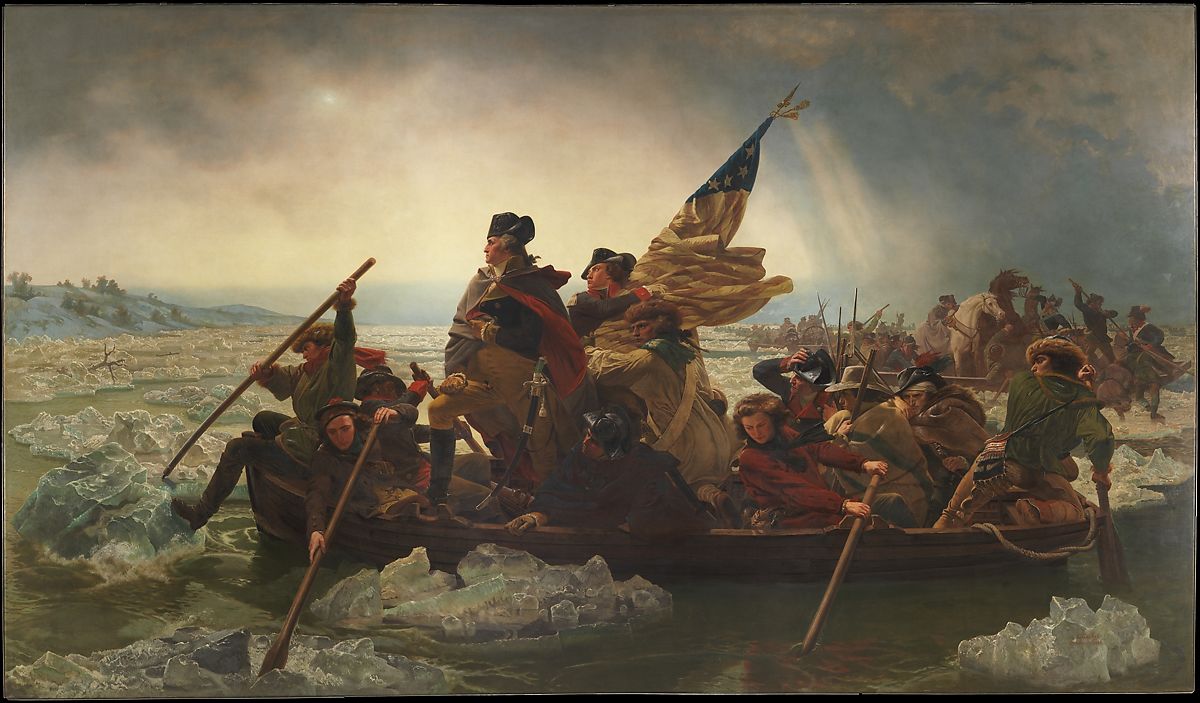 Washington Crossing the Delaware, 1851, by painter Emanuel Leutze, from The Metropolitan Museum of Art, https://www.metmuseum.org/art/collection/search/11417Closely examine the original painting "Washington Crossing the Delaware" by Emmanuel Leutze.
Washington Crossing the Delaware, 1851, by painter Emanuel Leutze, from The Metropolitan Museum of Art, https://www.metmuseum.org/art/collection/search/11417Closely examine the original painting "Washington Crossing the Delaware" by Emmanuel Leutze. Choose one of the people in the boat and:
- Describe the person you chose. For example, George Washington, the man to the left and in front of George Washington with an oar and a Scottish hat, the man in the stern (back of the boat) with an oar wearing a fur hat and looking over his left shoulder, or the man holding the flag, etc.
- Based on your analysis of the painting, the person you chose, and what you know about Washington crossing the Delaware, write a two-paragraph story about your experience using all of your senses. Think about: What so you see? What do feel? What do you hear? What do you smell? What do you taste?
Your Response
Document
Surrender of the Hessian Troops to General Washington, after The Battle of Trenton. December 1776. Copy of lithograph, 1850
12/1776 (artwork 1850)
This is a copy of a lithograph that was gathered as part of the George Washington Bicentennial Commission in 1931-1932. The Commission's purpose was to celebrate the birth and accomplishments of Washington, and to collect, preserve, and publish writings, artworks, and photographs pertinent to his life and times.
This primary source comes from the Records of Commissions of the Legislative Branch.
National Archives Identifier: 532880
Full Citation: Photograph 148-GW-332; Surrender of the Hessian Troops to General Washington, after The Battle of Trenton. December 1776. Copy of lithograph, 1850; 12/1776 (artwork 1850); The George Washington Bicentennial Commission, 1931 - 1932; Records of Commissions of the Legislative Branch, ; National Archives at College Park, College Park, MD. [Online Version, https://www.docsteach.org/documents/document/surrender-hessian-troops, April 23, 2024]Surrender of the Hessian Troops to General Washington, after The Battle of Trenton. December 1776. Copy of lithograph, 1850
Page 2

Document
Washington at Princeton. Copy of lithograph by D. McLellan
1/3/1777 (artwork 1853)
This copy of an 1853 lithograph by D. McLellan shows General Washington at Princeton, New Jersey.
This primary source comes from the Records of Commissions of the Legislative Branch.
National Archives Identifier: 532879
Full Citation: Photograph 148-GW-331; Washington at Princeton. Copy of lithograph by D. McLellan; 1/3/1777 (artwork 1853); The George Washington Bicentennial Commission, 1931 - 1932; Records of Commissions of the Legislative Branch, ; National Archives at College Park, College Park, MD. [Online Version, https://www.docsteach.org/documents/document/washington-princeton, April 23, 2024]Washington at Princeton. Copy of lithograph by D. McLellan
Page 1
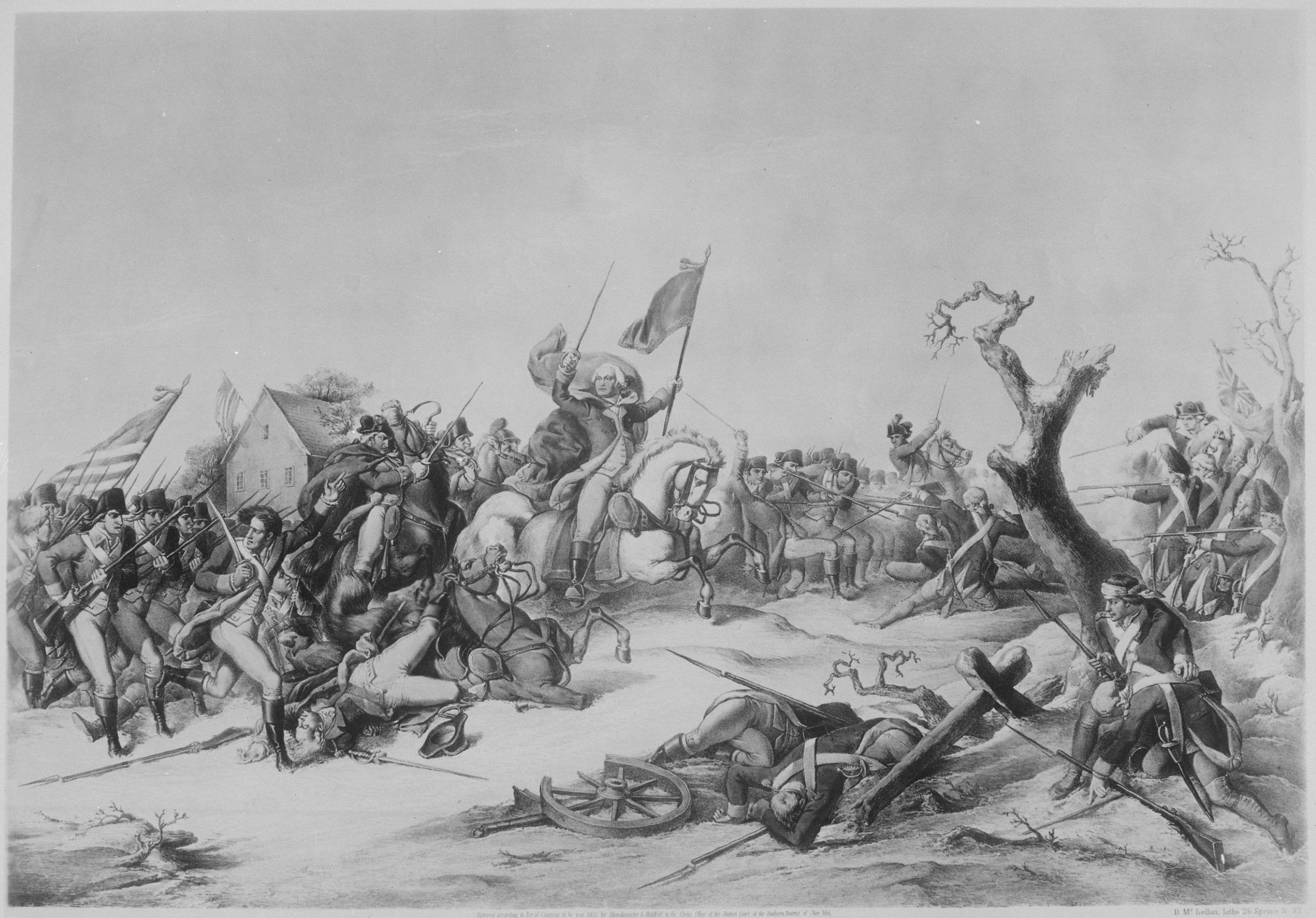
Document
Washington at the Battle of Trenton. December 1776. Copy of engraving by Illman Brothers after E. L. Henry, circa 1870.
12/26/1776 (artwork 1870)
This is a copy of an engraving by the Illman Brothers based on a painting by E.L. Henry. It was gathered as part of the George Washington Bicentennial Commission. The Commission's purpose was to celebrate the birth and accomplishments of Washington, and to collect, preserve, and publish writings, artworks, and photographs pertinent to his life and times. The National Archives holds this photograph (from 1931-1932) of the print as part of the records of the Commission.
This primary source comes from the Records of Commissions of the Legislative Branch, 1928 - 2007.
National Archives Identifier: 532916
Full Citation: Photograph 148-GW-580; Washington at the Battle of Trenton. December 1776. Copy of engraving by Illman Brothers after E. L. Henry, circa 1870.; 12/26/1776 (artwork 1870); The George Washington Bicentennial Commission, 1931 - 1932; Records of Commissions of the Legislative Branch, 1928 - 2007, ; National Archives at College Park, College Park, MD. [Online Version, https://www.docsteach.org/documents/document/washington-battle-trenton, April 23, 2024]Washington at the Battle of Trenton. December 1776. Copy of engraving by Illman Brothers after E. L. Henry, circa 1870.
Page 1
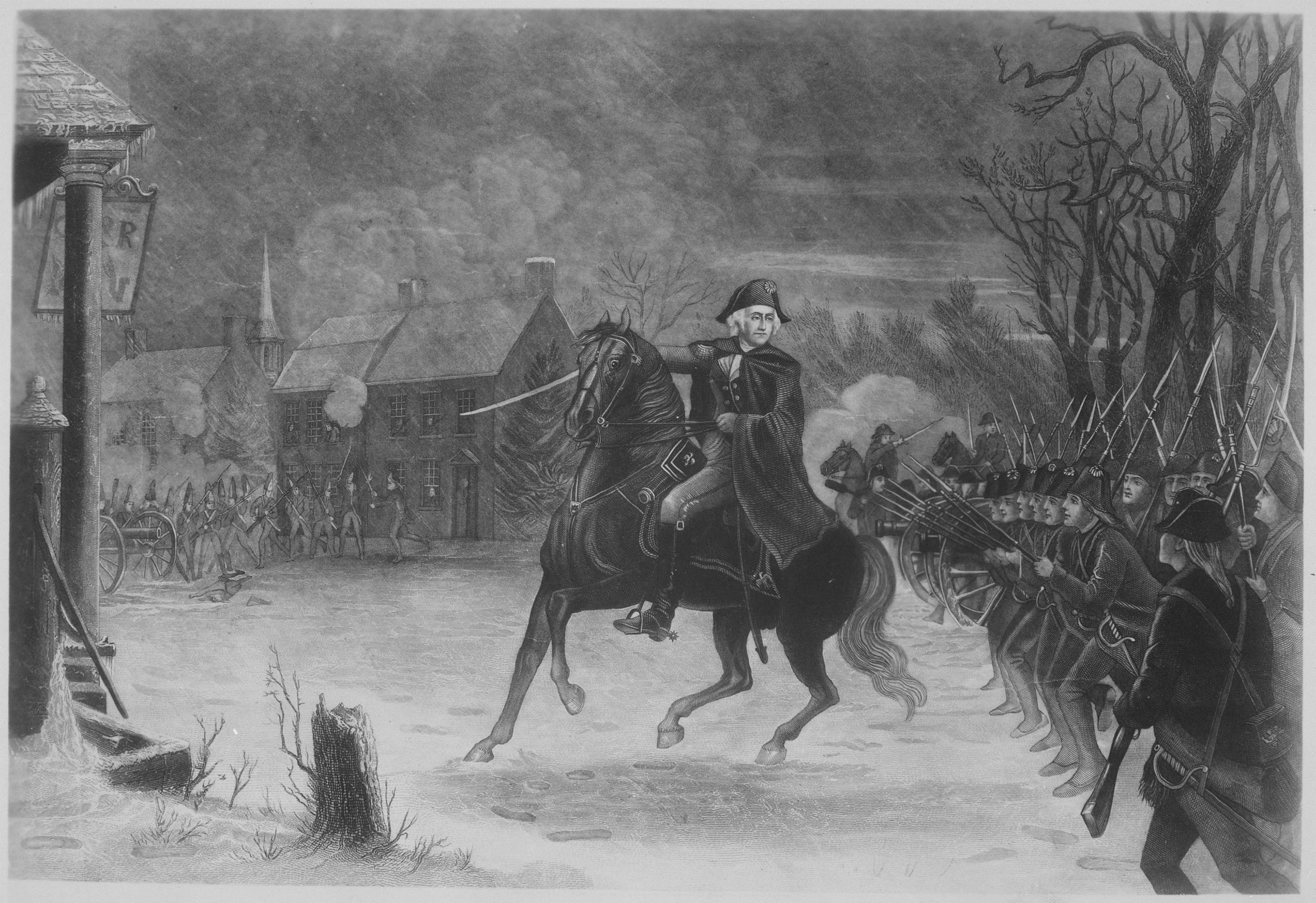
Document
Washington Crossing the Delaware. December 1776. Copy from painting by Emanuel Leutze, 1851
12/1776 (artwork 1851)
This is a copy of an engraving based on a painting by Emmanuel Leutze.
This primary source comes from the Records of the Commission of Fine Arts.
National Archives Identifier: 518220
Full Citation: Photograph 66-G-15D(25); Washington Crossing the Delaware. December 1776. Copy from painting by Emanuel Leutze, 1851; 12/1776 (artwork 1851); General Photographic File of the Commission of Fine Arts, ca. 1910 - 1950; Records of the Commission of Fine Arts, ; National Archives at College Park, College Park, MD. [Online Version, https://www.docsteach.org/documents/document/washington-crossing-delaware, April 23, 2024]Washington Crossing the Delaware. December 1776. Copy from painting by Emanuel Leutze, 1851
Page 1
